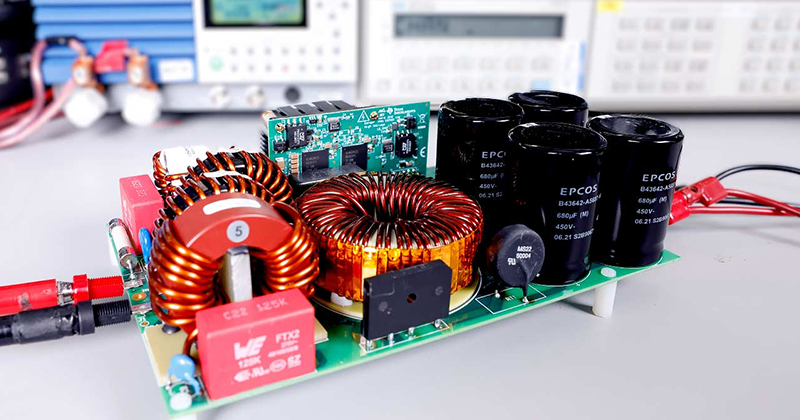DC-DC Power Supply Modules Basics
DC-DC power supply modules are crucial in converting and regulating electrical energy in the electronics and power management industry. These compact and efficient devices are essential for various applications, from consumer electronics to industrial machinery.
What is a DC-DC Power Supply Module?
A DC-DC power supply module is a device that converts direct current (DC) from one voltage level to another. It provides a stable and regulated output voltage, despite variations in input voltage or load conditions. It is suitable for applications where the input voltage may vary or where the required output voltage differs from the supply voltage.
Key Features of DC-DC Power Supply Modules:
- Efficiency: High-efficiency DC-DC converters minimize power loss and heat generation, which is crucial for battery-powered devices and systems with strict thermal constraints.
- Regulation: The output voltage is maintained within a tight tolerance, ensuring consistent performance of the connected electronic components.
- Compact Size: These modules are often designed for space-constrained applications, making them ideal for use in portable devices, embedded systems, and compact electronics.
- Adjustability: Some DC-DC modules offer adjustable output voltages, providing flexibility in designing systems that require multiple voltage rails.
- Protection Features: Many modules include built-in protections such as over-voltage, over-current, and short-circuit protection to safeguard against faults and extend the life of the system.
- Integration: DC-DC power supply modules often integrate various components such as switches, diodes, capacitors, and control circuits, simplifying the design and reducing the number of external components needed.
Types of DC-DC Power Supply Modules:
There are several types of DC-DC power supply modules, each with its unique characteristics and advantages:
- Step-Down (Buck) Converters: These modules reduce the input voltage to a lower output voltage. They are widely used in applications requiring lower voltage outputs and are known for their high efficiency.
- Step-Up (Boost) Converters: Conversely, boost converters increase the input voltage to a higher output voltage. They are ideal for situations where an increased voltage is needed.
- Buck-Boost Converters: These modules can either step up or step down the voltage, making them versatile for a variety of applications.
- Isolated Converters: Isolation is crucial in applications where electrical noise or high voltages are present. Isolated converters provide a galvanic separation between the input and output, ensuring safety and noise reduction.
- Module Regulators: These are integrated modules that offer a fixed or adjustable output voltage. They are often simpler to use and require fewer external components.
Applications of DC-DC Power Supply Modules:
DC-DC power supply modules serve in numerous applications due to their ability to deliver reliable and efficient power conversion:
- Consumer Electronics: Portable devices like smartphones, tablets, and laptops rely on these modules to maintain optimal power levels for their components.
- Industrial Automation: In automated systems, DC-DC converters ensure that sensitive equipment receives a stable power supply, enhancing performance and reliability.
- Medical Equipment: The precision and regulation offered by these modules are critical in medical devices where patient safety is paramount.
- Telecommunications: Base stations and network equipment use DC-DC power supplies to maintain consistent power output across varying input voltages.
- Renewable Energy Systems: Solar panels and wind turbines incorporate these modules to regulate power for storage and distribution.
DC-DC Power Supply VS AC DC Power Supply
The primary distinction between a DC–DC power supply and an AC-DC power supply lies in the type of input and output they handle:
DC-DC Power Supplies:
Input: DC-DC power supplies take direct current (DC) as its input.
Conversion Process: It converts the DC input voltage to a different DC output voltage, either higher (step-up) or lower (step-down), through a switching process that involves rapidly switching the input voltage on and off to produce an output voltage at a different level.
Output: The output is also DC but at a different voltage level than the input. This type of power supply is useful when a device requires a voltage that is not available directly from the source.
Applications: DC-DC power supplies serve a wide range of electronic devices, including laptops, mobile phones, LED lighting, and automotive electronics, where they provide the necessary voltage conversion for the device’s components.
AC-DC Power Supply:
Input: AC-DC power supplies start with alternating current (AC) as its input. It is the standard form of electricity provided by wall outlets and power grids in most homes and businesses.
Conversion Process: It converts the AC input to direct current (DC) output through a process that typically includes rectification (to remove the negative half-cycles of AC), filtering (to smooth out the DC), and regulation (to ensure a constant voltage output).
Output: The output is DC at a specific voltage level, which can be fixed or variable depending on the design of the power supply.
Applications: AC-DC power supplies serve devices that require a stable DC voltage but are plugged directly into an AC power source, such as home electronics, office equipment, and many types of industrial machinery.
In summary, an AC-DC power supply is to convert AC power from the wall outlet to DC power, while a DC-DC power supply is to convert DC power from one voltage level to another DC voltage level. Both are essential in different scenarios where voltage conversion is required.





